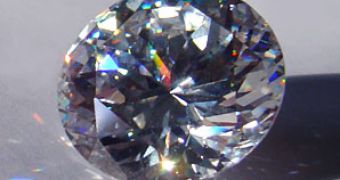A new invention could make fuel cells much more reliable and less expensive, using very small crystal sizes to create cubic zirconia and greatly decreasing the temperature at which fuel cells can operate.
Though fuel cells could one day replace the internal combustion engine, there are still some technological problems to be overcome, like hydrogen economy, the high temperature required by the chemical processes and their overall efficiency.
Current fuel cells require a temperature of 1,500 to 1,800 F (800 to 1,000 degrees C) to work properly, which requires energy and quickly wears out the metal, plastic and even ceramics components. This brings the need for using expensive platinum catalysts, which not only increase the costs, but are also scarce and hard to recycle.
However, the new patent pending invention of a team of researchers at UC Davis, led by chemical engineering and materials science professor Zuhair Munir, is able to use these nanocrystals to allow fuel cells to run at much lower temperatures, 122 to 212 degrees F (50 to 100 degrees C).
Cubic zirconia forms a brilliant clear crystal used as a low-cost substitute for diamond, but with its unique properties, like hardness, durability and low cost, make it useful in fuel cell applications.
The new method consists in making oxides, like zirconium oxide, the scientific name of cubic zirconia, with extremely small grain sizes, no more than 15 nanometers wide, which conduct electricity very well, due to their size.
Since all fuel cells are based on oxides, this new material could be used to increase their efficiency and to reduce the costs, by reducing the needed temperature and replacing precious platinum.
Fuel cells are very useful as power sources in remote locations, such as spacecraft, remote weather stations, large parks, rural locations and in certain military applications. A fuel cell system running on hydrogen can be compact, lightweight and has no major moving parts. Because fuel cells have no moving parts and do not involve combustion, in ideal conditions they can achieve almost 100% reliability.

 14 DAY TRIAL //
14 DAY TRIAL //